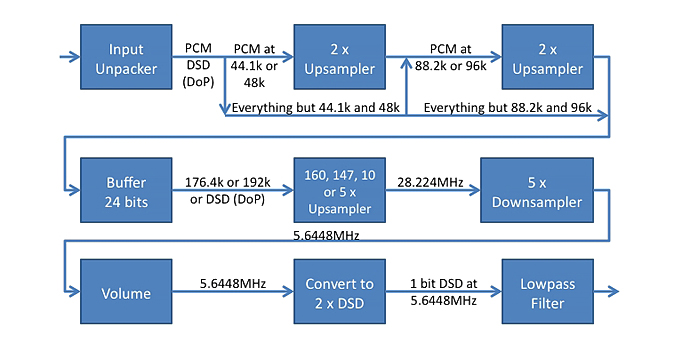This review page is supported in part by the sponsors whose ad banners are displayed below |
 |
 |
|
 |
Reviewer: Marja & Henk
Financial Interests: click here
Sources: PS Audio PWT; Dr. Feickert Blackbird/DFA 1o5/Zu DL-103; Phasure XX-PC and NOS1 DAC
Streaming sources: XXHighEnd; iTunes; Devialet AIR; La Rosita Beta; Qobuz
Preamp/integrated/power: Audio Note Meishu with WE 300B (or AVVT, JJ, KR Audio 300B output tubes); dual Devialet D-Premier; Hypex Ncore 1200 based monoblocks; Trafomatic Kaivalya; Trafomatic Reference One; Trafomatic Reference Phono One; Music First Passive Magnetic; AbysSound ASX-2000 [in for review]
Speakers: Avantgarde Acoustic Duo Omega; Arcadian Audio Pnoe; Podium Sound One;
Cables: complete loom of ASI LiveLine cables; full loom of Crystal Cable cables; full loom of Nanotec Golden Strada; Audiomica Pearl Consequence interconnect; AudioMica Pebble Consequence [in for review]
Power line conditioning: PS Audio Powerplant Premier; PS Audio Humbuster III; IsoTek Evo 3 Syncro; AudioMica Allbit Consequence
Equipment racks: Solid Tech and ASI amplifier and TT shelf
Sundry accessories: Furutech DeMag; ClearAudio Double Matrix; Nanotec Nespa #1; Franc Audio Ceramic Disc Classic; Shakti Stones; Manley Skipjack, Akiko Audio sticks
Online Music purveyors: qobuz.com, bandcamp.com, amazon.co.uk
Room treatment: Acoustic System International resonators, sugar cubes, diffusers
Room size: ca. 14.50 x 7.50m with a ceiling height of 3.50m, brick walls, wooden flooring upstairs, ca 7 x 5m with a ceiling height of 3.50m, brick walls and concrete floor downstairs.
Price of review item in the US: $5’995 (€5’995 incl. VAT in Europe)
|
 |
Paul McGowan, the leading man at PS Audio of Denver/Colorado, thinks of himself a bit like a rebel; a rebel with a cause that is. We learnt a bit more about his motivations and mind set in an interview we conducted with Paul at the eve of introducing their Network Bridge, an add-on to the PS Audio PerfectWave DAC or PWD for short. That was then or what would become the MK1. In the meantime PS Audio have introduced the MKII which meant a new digital PCB, new firmware and a new remote. This €1’000 upgrade is easily installed by the customer since all necessary tools and instructions are included. In this way, PS Audio avoided the trap many manufacturers fall into who outright replace a product with a new one and in the process devaluate the older model to scrap value. Even if a customer buys a second-hand PWD MK1 today, she can convert it to current MKII when the funds are available. It’s as simple as that.
|
 |
with optional Bridge installed
|
Another aspect of Paul McGowan is fearlessness about the dogma of ‘not invented here’. If someone has a good idea that will improve his products, Paul will embrace it and give all credit due to the one who deserves it. This happened when Paul was introduced to Ted Smith via a mutual friend, the SACD maven Gus Skinas. Ted is a software developer with an immense track record. He is also a hardcore music lover who has been tinkering with SACD and its underlying DSD format for many years after encountering his first SACD disc.
|
|
|
His then Sony SACD player became the first victim of Ted’s experiments and was altered substantially versus its DAC’s original layout. This became the start of a serious project to design and build the best DSD DAC possible. Cost was no object nor was the size of the thing under development. From the beginning Ted was clear that the use of a commercial DAC chip wouldn’t be an option. What he had in mind was not possible with a single chip nor a massively paralleled array as what many manufacturers revert to. Being a software guy, he decided to do all conversions to proper DSD in software. This meant a field-programmable gate array or FPGA.
|
 |
Now he coded a true 1-bit converter into his gate array. Initially Ted meant to use the DAC only for DSD and process that specialized signal for the very best analog equivalent on the other end of the DAC. But whilst working on the project he discovered a software solution that would accept any kind of digital input signal. In true software guy fashion, he merely looks at what enters his FPGA. By sampling that signal at very high speed, the resultant pattern determines the signal’s format. This welcomes PCM at all going rates just as it does DSD. In fact it converts all PCM to DSD in the process.
|
 |
|
|
|
An additional advantage of this process is that the incoming clock signal is discarded. Once the signal type is recognized, there’s upsampling to 30 bits at 10 x the standard DSD rate or 28.224MHz to push noise deeply into the ultrasonic sphere. Before the signal hits the low-pass filter to convert to analog, it gets downsampled to DSD128 at 5.6448MHz. Ted’s gate array has plenty of bit headroom to dedicate 20 bits to just volume control over 100 x 0.5dB steps across 120dB. In total his DSP environment can process 50 bits of data density.
|
 |
According to Ted Smith, "DSD is whatever bitstream gives you after running through a low-pass filter". A bitstream with a high signal results in a lot of high pulses, a bitstream with a low signal results in a lot of low pulses. Pulses represent energy, hence high pulses mean high energy. Sounds simple, doesn’t it? In PCM encoding the bits give you a number. That number has to be translated to an electric level at very high precision. The electric level is set by little resistors inside the DAC chip. This inherently limits precision and the power may fluctuate a little.
|
 |
 |
 |